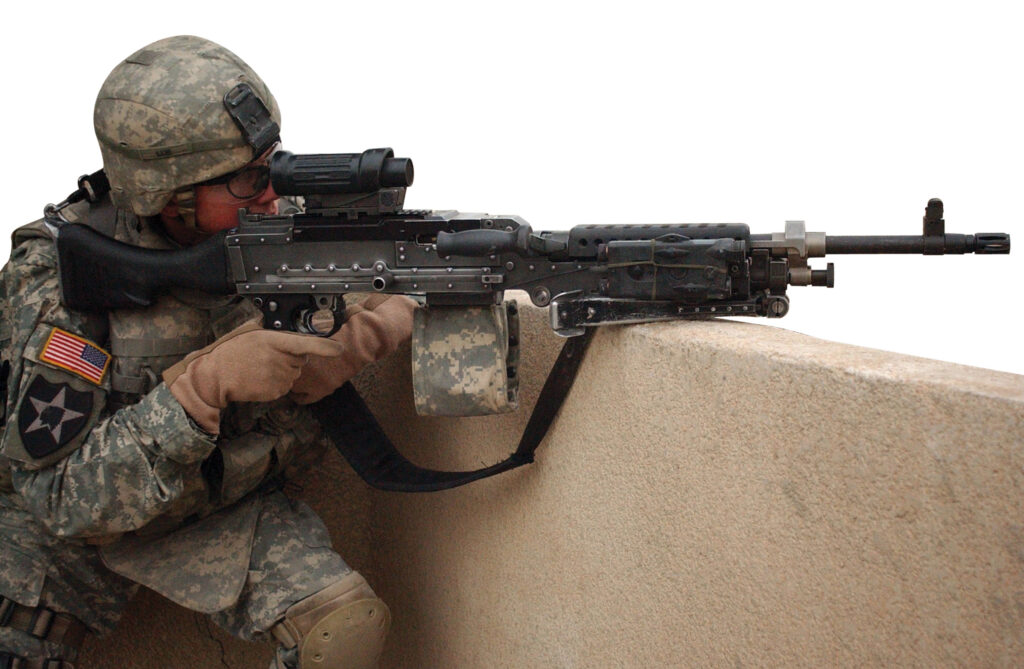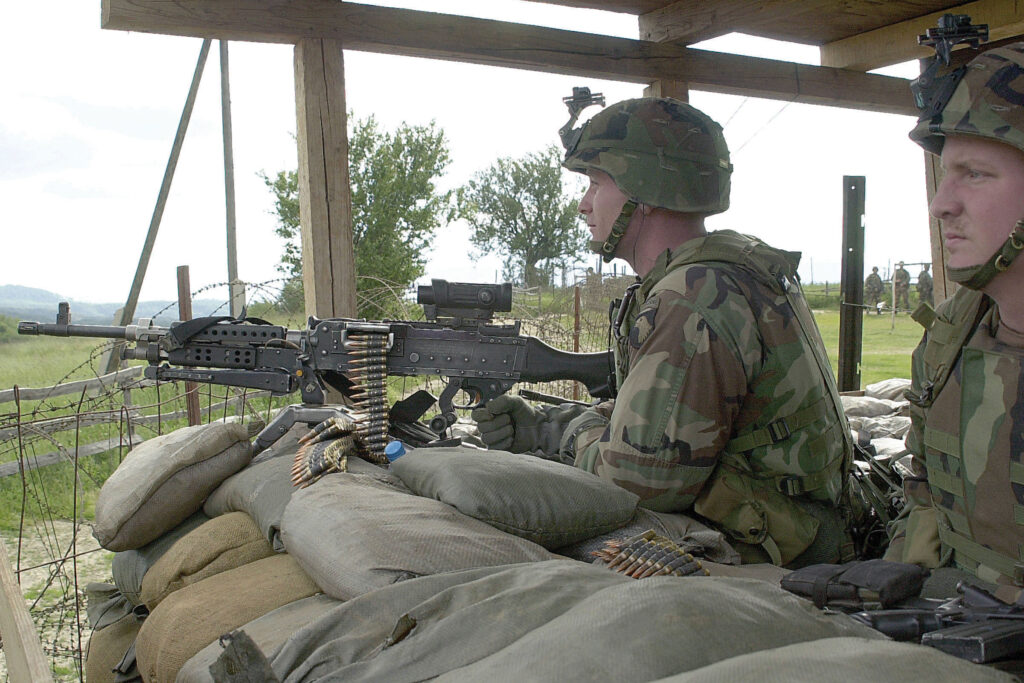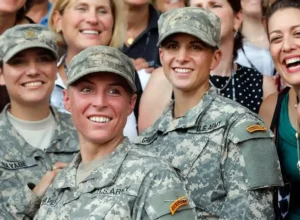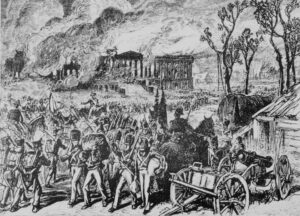Written By: Colonel Charles A. Jones, USMCR

Many infantry weapons past and present—automatic rifles, submachine guns, assault rifles, and general purpose machine guns—can be traced directly to World War I. Today, only two classes of these weapons remain as standard issue. Automatic rifles, such as the famous Browning Automatic Rifle (BAR) of World War II and Korean War fame, are museum relics. Submachine guns, general issue weapons in World War II, are today used almost exclusively for special operations. Assault rifles, such as the AK47 and M16 that are standard issue weapons today, are direct descendants of Germany’s famous World War II StG44 or “Sturmgewehr” (assault rifle).
All United States military services use general purpose machine guns (GPMG) extensively in today’s conflicts. These weapons are standard issue variants of the M240, which is based on the MAG58 developed in the 1950s by the famous firearms manufacturer Fabriqué Nationale (FN) of Belgium. MAG is the acronym for Mitrailleuse d’Appui General (general purpose machine gun). Development of the GPMG, resulting in today’s state-of-the-art M240B used by the Army, was a logical solution to a problem encountered in World War I. During that war, machine guns were the most important infantry weapon and most prolific killer. They dominated trench warfare, slaughtering thousands of soldiers moving against positions defended by them.
Machine guns, however, underwent radical changes just before and during World War II. The classic World War I guns—British Vickers, American Brownings, and German Maxims—were water cooled, meaning a tube or jacket filled with water surrounded the barrel to cool it, enabling guns to provide virtually indefinite sustained fire without overheating barrels, as long as the jackets contained water. The guns were mounted on heavy tripods, substantially increasing gun weight. When placed in fortified trenches or other fortified positions, such guns dominated battlefields.

Water-cooled guns were primarily defensive weapons that fired prolonged bursts of bullets from static positions. Assault troops could not carry the cumbersome and heavy guns during offensive movement, so troops attacking machine gun positions found themselves at great disadvantage. Advancing troops had only slow firing bolt-action rifles with limited ammunition capacity to fight defenders armed with guns firing hundreds of rounds per minute for extended periods.
However, after World War I, warfare changed from static, trench warfare to war of movement. To accommodate movement, new machine guns were required since rapidly moving troops could not carry World War I’s behemoths. While gun weight was unimportant in World War I’s static positions, lightweight weapons were crucial to machine gunners moving and firing on dynamic battlefields. Germany—almost always the leader in small arms development—developed a practical solution to this problem by creating the GPMG, a weapon greatly different from World War I’s guns. The guns were “general purpose” since they served two roles.
Mounted on tripods, they served as heavy guns providing sustained fire from static positions. Fired by a prone gunner using a bipod or fired from the shoulder or hip by a standing gunner, they were light guns providing mobile fire support. Since GPMGs were lighter, gunners could carry them more easily in offensive movement, thus keeping pace with fast-moving, more lightly armed infantrymen.
This mobility was due largely to weight reduction made possible by air cooling rather than water cooling. Air-cooled guns were lighter since they had no water-filled jackets surrounding their barrels for cooling. In most GPMGs, the barrel was placed in a jacket or sleeve with perforations or openings to facilitate cooling. Since air alone was no match for water in cooling barrels, air-cooled guns had changeable barrels. Hot barrels had to be replaced periodically with cool barrels to ensure sustained fire.
If not replaced, heat progressively degrades barrels, compromising accuracy. Eventually, barrels not changed burn out, causing stoppages, often at the least opportune times. In the 24 July 1944 edition of Time magazine, the famous World War II correspondent Robert Sherrod described the massive Japanese banzai attack on Saipan on 7 July 1944.
Marine artillerymen, having fired their big guns pointblank at waves Japanese attackers “manned their few machine guns and fired until the guns stopped from overheating.” The famous air-cooled MG34, developed in the early 1930s, was Germany’s initial successful GPMG. The MG34 was belt-fed, fired approximately 800-900 rounds per minute, and weighed approximately twenty-seven pounds, compared to the water-cooled MG08 from World War I, which weighed approximately forty pounds.
The MG34’s barrel could be changed in seconds by rotating the receiver away from the barrel jacket, exposing the rear of the jacket and permitting the hot barrel to be withdrawn easily and replaced with a cool one. Photographs from World War II show German machine gun crew members carrying tubes containing spare barrels. Although a success, the MG34’s superb quality and close tolerances meant slow, expensive manufacturing and unreliability in adverse conditions. The MG34’s successor, the MG42, fielded in 1942, featured a simplified design that eased manufacturing and had greater tolerances, thus improving reliability. Its prodigious rate of fire was a nasty surprise for the Allies. Firing at approximately 1,200-1,500 rounds per minute (RPM), the MG42 acquired the nickname “Hitler’s buzz saw.”

The high rate of fire required a barrel change even quicker and easier than that of the MG34. An MG42 gunner could accomplish this in seconds by pushing a release at the rear of the barrel jacket, exposing the barrel for removal without rotating the receiver. An important point is that only the barrel was changed in the German guns; bipods remained attached to barrel sleeves holding barrels. Thus, spare barrels were light since they were only barrels, not barrels with attached bipods. In World War II, water-cooled guns, called “heavy” machine guns, were still used but primarily for defense. One such weapon was the Browning M1917A1, which first saw service in World War I. A Marine Corps after action report for Iwo Jima noted a disadvantage not found in air-cooled guns—water-cooled guns became inoperable if bullets or shell fragments pierced the water jacket.
Air-cooled machine guns became the mainstay for most armies of the world, with the MG34 and MG42 profoundly influencing machine gun development after World War II as nations sought improved guns. The MG42 was so good that it continued in use as the MG3 in Germany and other countries. In 1957, the M60 replaced the two Browning light air-cooled guns the United States used in World War II—tripod-mounted M1919A4s and bipod-mounted M1919A6s. M60s had two advantages over Browning guns: they were lighter and had easier and quicker barrel changes.
The M60’s unreliability and poor design, however, earned it the unflattering nickname. Soldiers soon referred to the M60 as “The Pig.” Comparison between M60s and M16s is interesting. M16s experienced initial problems—often fatal for users—when first introduced in Vietnam, resulting in extensive criticism, adverse publicity, and Congressional hearings. Ultimately, modifications were required. The M60’s mediocrity, problems, and deficiencies did not draw the same level of criticism or attention as that of the M16.
One M60 problem was that, unlike German guns, its bipod was attached to the barrel itself rather than to a barrel sleeve, meaning that each spare barrel also had a bipod, increasing the spare barrel weight. In his book The Browning Machine Gun, Dolf Goldsmith recounts asking one officer what he thought about the M60 in Vietnam. The answer: “This officer’s remarks of what he thought of the M60 are unprintable.”
In Goldsmith’s book, small arms expert Peter Kokalis lists the M60’s numerous technical faults in detail. In summary, the gun suffered from receiver cracks, a poorly designed gas operating system, and jamming, all making its reliability questionable and performance poor. Goldsmith quotes other experts. Chris Bishop stated, “The M60 earned the nickname ‘The Pig’ because it was heavy for a squad machine gun, and its design faults were not calculated to win its popularity.” Timothy Mullin added, “The M60 is one of the worst machine guns fielded by any major army in the past 30 years.”
Goldsmith’s personal experience with M60s as a National Guard armorer reinforced these negative opinions. Without question, the M60 had to be replaced. Fortunately, finding a replacement was easier than expected. In 1977, the Army adopted a variant of FN’s MAG58 as a coaxial machine gun for armored vehicles and tanks. As the need to replace M60s became apparent in the late 1980s, the coaxial MAG was adapted to become an infantry weapon in the 1990s. In its summary of the MAG58, the 1977 edition of Small Arms of the World states, “The MAG is another development of FN, and like most . . . [FN] products . . . it demonstrates first-class engineering ability.”
The MAG58, adopted by the United States Army during the 1990s as the M240B, is the classic GPMG. It is light (approximately twenty-four pounds), air-cooled, and can be fired in several modes. For sustained fire, it can be fired from a tripod; for assault or mobile fire, it can be fired in two modes. First, a prone gunner can fire the weapon from the gun’s bipod or any other support. Second, a standing gunner can hold the left bipod leg or the forward hand guards and fire from the hip, or hold the hand guards and fire from the shoulder. Gas operated, the M240B’s 7.62 mm cartridges give it much more destructive power than the M16’s and M249 squad automatic weapon’s (SAW) 5.56 mm cartridge. Users regulate the M240’s rate of fire by adjusting the gun’s gas operating mechanism (slow rate is approximately 750 RPM, medium rate is 850 RPM, and fast rate is approximately 950 RPM).
The barrel is easily changed by depressing the release lever, rotating the barrel’s handle from its position on the right side of the gun to the upright position, and then pushing the barrel forward and up to separate it from the receiver. With the barrel inserted, the handle can also be used to carry the gun.
The barrel change was an improvement over German guns since German barrels did not have handles (mitts were needed to handle hot barrels), and over M60s, since M240B barrels do not have bipods attached to each spare barrel. The M240B’s bipod is attached at the end of the gas cylinder—which runs below and parallel to the barrel—closest to the muzzle.
The MAG58 originally had no hand guard over the barrel or over the gas cylinder in the area where standing gunners would naturally grasp the gun—between the bipod and the junction of the gas cylinder and the lower receiver. Thus, shooters standing and shooting from the shoulder risked hands burned by a hot barrel and gas cylinder. To protect a standing shooter’s non-firing hand as it grips the front of the weapon, a lower hand guard (or heat shield) was installed on the M240B, covering the gas cylinder between the bipod and the gas cylinder’s junction with the forward end of the lower receiver.
An upper hand guard can be placed on or removed from the barrel without using tools. Spare barrels are not issued with hand guards. The weapon can be used with or without the upper hand guard, but if used without it, shooters risk burned hands.
While the M240B GPMG has an important dual-purpose role, it augments, rather than replaces, the Army’s true heavy machine gun, the Browning M2 .50 caliber, and its true light machine gun and squad automatic weapon, FN’s M249 SAW. What do today’s Army machine gunners think of the M240B? “Soldiers have great confidence in this weapon,” reads one comment in a 2003 report on weapons performance in Iraq, which states that “the vast majority of comments were positive.” One suggestion was to “[wire] down the heat shields.” A report from the Marine Corps, which adopted the MAG58 as the M240G, noted that they were accurate, reliable replacements for M60s.

equipped with a M240B machine gun in Kosovo, 5 June 2001.
(Defense Visual Information Center)
Used by numerous countries, the MAG58 and its variants are the world’s premier machine guns. It even achieved fame in a photograph published in February 2008 showing Britain’s Prince Harry in an armored vehicle; mounted beside him is an L7, the British version of the MAG58, easily identified by the bipod, barrel assembly, and barrel handle. The Army’s M240B is an excellent, battle-proven weapon with a high degree of reliability, dependability, durability and, most importantly, user confidence. As a testament to its excellence, the M240 can be reasonably expected to fire approximately 26,000 rounds, in testing or in the field, before failure. Today, decades after the M240B’s ancestors were developed in the shadow of World War I’s guns, the M240B is used with deadly, destructive effect in Iraq and Afghanistan. It is a gun no one calls “The Pig.”


